2022 Week 1: Family Wellness
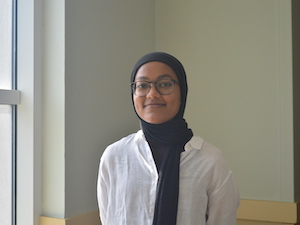 Fatima Elzamzami | Franciscan Center
Fatima Elzamzami | Franciscan Center
Although I’ve only been at the Franciscan Center for four days, it is clear to me what a significant role the organization plays in the surrounding community. Not only does the Franciscan Center provide resources for those who may need them, but also serves as a gathering place for the community. While shadowing my supervisor and handing out meals, I noticed that for a lot of folks, the daily meal services weren’t just a chance to get a free, hot, and nutritious meal; for many, it was a chance to talk to and catch up with friends. On days when the health department wasn’t occupying tables in our outdoor tents, people who got their meals sat and ate together. Some people didn’t even get meals, but just stopped by to catch up with staff and other people there. Although I was working, I heard snippets of interesting conversations and was even roped into some during slow hours, when no one needed help obtaining identification documents. I have volunteered with organizations that assist with food insecurity in the past, but that mainly consisted of handing out boxes of non-perishable food items. The Franciscan Center provides this same nourishment but also addresses the other purpose that food serves; a chance to take a break, to laugh, and to connect with others.
This experience reminded me of something that Lane Victorson had said in orientation, during his lecture on the History of Baltimore. He talked about how the greatest indicator of crime in a community was the level of social cohesion. After doing my own research, I found that social cohesion is associated with self-reported health, stress levels, infant mortality, and many other health outcomes. Like the countless birth certificates and IDs that the Franciscan Center doles out daily, community is another service that the Center provides. In doing so, they indirectly address some of the other challenges the community may be facing.
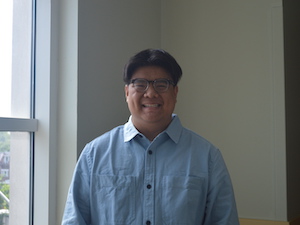 Kobi Khong | Rebuild, Overcome, and Rise (ROAR) Center
Kobi Khong | Rebuild, Overcome, and Rise (ROAR) Center
This was my first week at Rebuild, Overcome, and Rise and it was exciting to finally get started for this CIIP session. Previously I had not known about ROAR, but through my placement, with them, I had the opportunity to learn about them, and the work that they do inspires me. They’re a growing team of people who are passionate about their services that have such a significant impact on the lives of the people and the community that they work in. ROAR’s work in providing services for survivors of crime is something that I could see myself doing in the future.
Because of the pandemic, however, we’re remote for the time being, so with this new experience, there were some challenges that I’ve had to face and adjust towards. The biggest thing was learning how to separate my personal life at home from the work that I do. Waking up, working in, playing in, and sleeping in the same room every day can be exhausting, during my year of college spent at home I felt those detrimental effects very deeply and the burnout that comes following. I needed to learn how to set those boundaries so that everything that I did would not meld together. One of the great assets that CIIP provided that I took advantage of was the resource of the Impact Hub in Baltimore, over the week I used that space to do my work for my organization surrounded by other advocates and activists working on their projects, including some other CIIP Interns!
Despite that online modality, I’ve still been able to form relationships and connections with the people at my organization, but also part of my responsibilities has me reaching out to other members of the nonprofit and service community which has allowed me to learn more about the other organizations and groups that contribute towards improving equity in Baltimore. This sense of collaboration is inherent in all the work that these amazing groups do and the passion of the people contributing to this work is infectious and inspires me to do all that I can for the community.
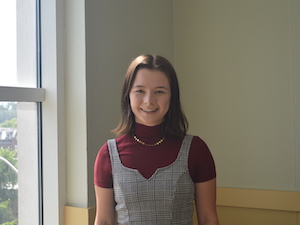 Maddy Kye | Episcopal Refugee & Immigrant Center Alliance
Maddy Kye | Episcopal Refugee & Immigrant Center Alliance
Over the course of the past week, my internship at ERICA caused me to reflect on just how important location and social connections can be to securing and maintaining work. This was sparked mainly by a conversation I had with my supervisor about a woman being served by the organization. Essentially, my supervisor detailed that this woman was forced to make a two-hour commute by bus each day, and to make matters worse, expressed that the buses were often unreliable. As such, my supervisor was hopeful that the woman would be interested in applying to different jobs, preferably those closer to her home. She asked me if I had had to apply to many positions in the past, where I worked, and other things of this sort.
I said yes, of course I had applied to positions in the past, having worked in food service previously, but admitted that I had gotten my first job because I had a friend who worked at the restaurant already. This was and remains typical in my hometown: most of the high school and college students find summer jobs in our small downtown area, which is within walking distance for many of us, including me. Although I rarely, if ever, walked to work, if I opted to do so, it was a mere thirty minutes. At this point, two things were pointed out to me. First, I was lucky enough to live in an area with many options for employment, regardless of skill level, and second, I had acquired my first job through social capital, something many immigrants, in particular, lack access to.
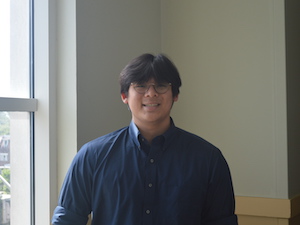 Jonathan Lee | Court Appointed Special Advocates (CASA) for Children of Baltimore
Jonathan Lee | Court Appointed Special Advocates (CASA) for Children of Baltimore
This first week with CASA Baltimore has allowed me to dive into the history and judicial process of foster care in Baltimore City. Coming into CIIP, I didn’t have a great understanding of how children ended up in foster care, and I wanted to put a large focus on understanding the role that CASA plays in training and supporting its volunteers. Court appointed Special Advocates (CASAs) serve as the bridge between the juvenile court and foster kids and their families. After getting to know the family for a period of time, they speak in court on the best interests of the child and advocate for next steps. Each family has different needs. Some parents need substance use treatment, anger management classes, or parental training. Some children need additional support for developmental disabilities, homework, or various other social and emotional needs.
I was surprised that nonprofits such as CASA do such important work and was disheartened to learn from my supervisor that a lot of judges don’t fully understand their mission. Due to the foster care process, CASAs aren’t appointed unless the judge feels that a child has a complicated case that needs more assistance. Sometimes, this can take multiple years. These are years that a child will spend away from their family in the foster care system. Since reunification is the end goal for most families, the earlier a CASA is appointed. the better the outcomes can be. CASAs are able to urge the court system to provide special programs and resources for parents who are required to perform court ordered services. For example, a parent who works 60 hours/week may not have time to complete their anger management training. As a result, a CASA can explain this to the judge, and financial assistance may be provided to cover the time off of work.
Although this week has been a lot of information, I’m excited for what my next 7 weeks have in store. My goal this summer is to work on the CASA resource guide, and I want to create something that covers many of the inequities that children experiencing foster care may face. Unfortunately, 30% of foster kids end up homeless and 50% end up in an abusive relationship. These are statistics that highlight the many injustices in this system.
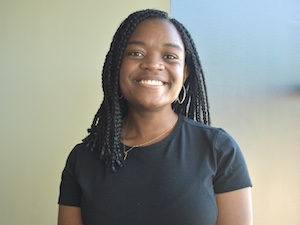 Koye Oputa | BCPS Special Education
Koye Oputa | BCPS Special Education
Why can a Black Baltimorean grandmother who has supported her neighborhood for over six decades look at the recently opened state-of-the-art gym, the promising new community school, or the newly renovated homes that are increasingly acquiring more and more of her neighborhood and say, “They’re not meant for us [my neighborhood]”?
Because Baltimorean politicians serve their tourists (and potential newcomers), not their citizens.
I first heard this saying in a discussion regarding how government officials tricked Maryland voters into approving the building of casinos in the state by promising that some of the casino revenue would go to state education funds. Though some casino revenue went into education funds, funding from other, non-casino sources was cut such that there was no significant increase in funds available for education, just a change in where the funds came from. This impacted several Maryland districts, including Baltimore City, that need greater financial support for their education system. (The second time I heard the saying was when over $166 million of state funds were invested in Baltimore’s Inner Harbor tourist spots, during a pandemic, rather than supporting programs that would support dire citizen needs).
I first witnessed this saying in action on a sweltering 89°F day when several Baltimore City Public Schools closed due to a lack of air conditioning, a longstanding issue for city schools that has yet to find any resolution. (The second time was when it took an hour to get to a school 2.4 miles away using MTA buses—the transit that hundreds of Baltimore students rely on to get to school due to the lack of yellow school buses dedicated to student transport.)
In other words, this week I witnessed what it means for a city to disinvest in its people.
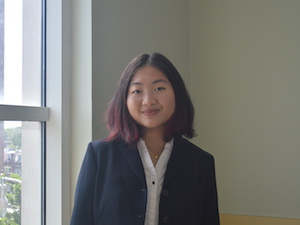 Estelle Yeung | Baltimore Harm Reduction Coalition
Estelle Yeung | Baltimore Harm Reduction Coalition
My first week of work at BHRC has been enriching! I’m glad that I’m able to work in-person this summer, as it allows me to get to know staff and volunteers organically. This week has also taught me about the practical logistics of harm reduction in Baltimore City, through kit-making for BHRC’s service sites.
The main way that I’ve learned about harm reduction has been in a public health class with Professor Peter Beilenson, where I learned about the needle exchange program begun by the Baltimore City Health Department, buprenorphine, and methadone. I’ve read and written papers about the opioid crisis, but lacked an understanding of exactly how the ideas of overdose prevention translated into practice. One framework used in the public health field, harm reduction, reduces the negative consequences and stigmas associated with drug use and other stigmatized activities. This week has helped me to better understand what the day-to-day work of harm reduction looks like in a community setting.
BHRC advocates for harm reduction as a means to “meet people where they are at,” especially for individuals targeted by the war on drugs and anti-sex worker policies, according to their website. They hold drop-bys at the office and service sites throughout Baltimore almost every day to make safe supply kits more accessible to people who use drugs. For example, at St. Luke’s Church on the Avenue in Hampden, BHRC has continued the needle exchange program that the Baltimore City Health Department began. During the pandemic, the health department pulled back on some of their needle exchange sites because of staffing shortages, so BHRC stepped in and was asked to stay afterwards. Also, many of BHRC’s clients are regulars at service sites. When making the staffing schedule for services, staff members work at the same locations weekly to build relationships with participants and to foster a consistent presence in the community.
I’ve learned a few of the ways that BHRC practices “Meeting people where they’re at.”
“Meeting people where they’re at” includes preparing safer injecting, smoking, and snorting kits for people who use drugs, which contain supplies like clean cookers, glass stems, short straws, alcohol prep pads, and sterile water ampoules. “Meeting people where they’re at” also includes increasing access to clean needles of different sizes. Through kit-making, I’ve learned what each of these supplies look like and the reasons for which we distribute them. Providing people who use drugs with clean supplies offers them a safer alternative to the drug paraphernalia they may otherwise be using to inject/smoke/snort. Many supplies that BHRC includes in kits are the result of feedback from clients, who identify which items are most helpful but difficult to obtain.
Harm reduction also includes increasing access to naloxone, a medication used to reverse opioid overdose. One way BHRC does this is by preparing requested packages to mail to people who use drugs and their friends and families. This is in partnership with NEXT Distro, an online and mail-based harm reduction platform. For these packages, naloxone kits, fentanyl testing strips, and educational materials are added to mailers, along with resources to connect clients with their local health departments. These mailers are requested online and clients receive the supplies at no cost, and this program focuses on those living in rural areas without a specialized harm reduction organization.
Kit making this week has expanded my understanding of harm reduction and connected it to my previous education on the opioid crisis and overdose prevention. I’m definitely still learning about these social issues, and I look forward to continuing my internship with an open mind and an eagerness to learn from my coworkers, volunteers and community members.
